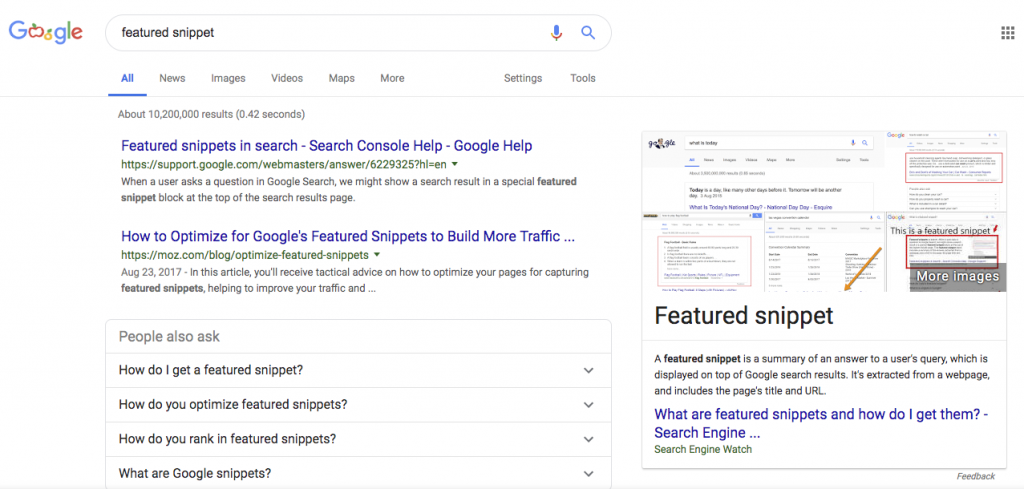The meta title and description are two of the most important pieces of “metadata”—data not shown directly on the webpage, but instead used primarily by search engines to fit the page into the rest of the internet—both because they are important for SEO and because your prospects and customers will actually see them. Here’s how to write good ones.
What is the SERP?
SERP is an acronym for Search Engine Results Page. It’s what you see after you search for anything in any search engine. It’s the “ten blue links” which Google has more recently spruced up with differently-formatted features such as featured snippets. (Really, us SEOs only care about Google, so you’ll see me mentioning a lot of Google-specific features in these marketing posts. Google does take up an absolutely ridiculous amount of the search engine market share, which is no surprise, since it does a much better job than any other search engine at answering user queries.)

The meta title and description show up directly on the SERP. In the image above, the link “Featured snippets in search – Search Console Help – Google Help” is that page’s meta title. The piece of descriptive text below the link and the URL is the meta description: “When a user asks a question in Google Search, we might show a search result in a special featured snippet block at the top of the search results page.”
Meta titles also show up in the browser tab:

And meta titles and descriptions show up in link previews in applications like Slack:

Writing Meta Titles and Descriptions
For both meta titles and descriptions, you have a character limit. Additional characters beyond the limit are cut off with an ellipsis. For the title, a good rule of thumb is 65 characters total, including spaces. For the description, you’ll frequently only see about 120 or so characters on the SERP, but there are two major exceptions: sometimes, Google will show more of the meta descriptions for higher-ranking results, and further, link previews show a lot more of the description. As such, try for 320 characters, and go enough over that to finish the last sentence.
Your meta title is a decent ranking factor, so you’ll want a core keyword in the title, but the meta description is much less so. On the whole, the best way to write this metadata is not to pack them full of keywords. Contrarily, think of them as your website’s highway billboard.
People look at highway billboards for about a second before deciding whether or not to care. People also look at your search result for about a second before deciding whether or not to click. So, write your title and meta description like a highway billboard. Give people a punchy, intriguing title and back it up with your best marketing copy for your meta description, especially for the first 120 or so characters, which is the shortest amount that Google will show on the SERP. Of course you should include keywords so that people know what your page is about, but you should focus on writing good copy, not on the keywords.
Even if you magically ascend to position #1 on the SERP, if your meta title and description don’t look interesting to searchers, they aren’t going to click your result. Conversely, an intriguing meta title and description can make people click on you instead of your search competitors, even if they might be a few positions above you. Given the importance of these pieces of metadata to searchers, it shouldn’t even matter if Google uses them as a ranking factor. The end goal isn’t to rank #1, after all. The end goal is more money in the bank.